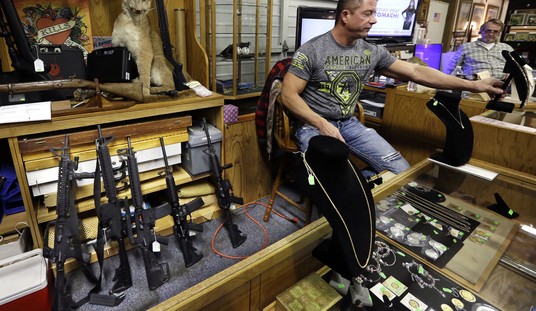While ATF gives away weapons to Mexican drug cartels (re: Fast and Furious), the legitimate firearms market buys them and it appears that Russia has been a growing market source. Izhmash, the Russian civilian/ sport arms producer, shows US exports were up 15% as of January 2013. That number represents $16.2 million worth of firearms exported from Russia to the US last year. Konstantin Busygin, CEO of Izhmash, expressed that the company hopes to further open up the US market for its arms. Presently, the US represents about 80% of Izhmash’s civilian market for sporting arms. Most consumers are familiar with the Saiga Kalashnikov-style brand of rifles and shotguns that Izhmash produces.
Izhmash just finished testing its new VS-121 sniper rifle designed in a bullpup configuration based on the Dragunov. The rifle is chambered for both the 7.62x54mm and 7.52x51mm and incorporates a new design trigger and firing mechanism. Also new from Izhmash is the AK-12. It features a Picatinny rail and improved adjustable telescoping buttstock. The rear sight has been moved from the front of the receiver to the rear, the combination selector lever/dust cover on the right side of the receiver has been replaced by a thumb-activated ambidextrous selector lever above both sides of the pistol grip. Add to that an ambidextrous pushbutton magazine release, ambidextrous ejection port and reversible cocking handle above the vertical fore-grip. The military/police model will have several firing modes, safe, semi, 3-round burst, and full auto. The civilian version will be semi-auto only chambered for .223 and 12 gauge.
While Busygin is enjoying a growing market for his company’s products, the former CEO of Ishmash isn’t so lucky.
Recently, he was detained in Izhevsk, the Russian town where Izhmash is situated, and carted off to Moscow to face charges of fraud. Vladimir Grodetsky was fired as Izhmash CEO in 2011. Interestingly enough, Grodetsky was not charged with anything related to dealing in firearms.
He was under scrutiny for illegally selling Izhmash property through a Cyprus company. Allegedly, in 2007 Grodetsky entered an arrangement with someone from the Sarapulsky Radio Plant to embezzle $1.1 million through forged orders. The charges could mean a 10-year rap. As head of Izhmash since 1996, he was responsible for introducing new firearms models, but in spite of that, the company tottered on the brink of bankruptcy in 2009.
Referring back to the Fast and Furious fiasco, there may be more trouble ahead for the ATF buffoons and Attorney General Holder to the point where they may wish they only had the trouble Grodetsky faces. There is a program initiated by the Mexican National Defense Secretariat (SEDENA) in coordination with the state government that may turn up more Fast and Furious guns. SEDENA has set up a gun exchange program in Morelos in order to reduce the possession, sale and purchase of illegal weapons. Much like the gun exchange programs in the US, the Mexican authorities in Morelos are offering money for guns that are turned in.
The Mexican government in Morelos claims that the gun exchange program was developed to eradicate accidents in the home and to keep guns out of the hands of children. However, if any Fast and Furious guns show up, it’s another nail in Holder’s political coffin, not to mention that the ATF agents who ran this abomination may no longer enjoy their plush “demotion” riding desks in DC. For the most part, in order to own a firearm in Mexico, the owner has to register it with the Ministry of Defense.
The arms exchange will continue in Cuernavaca until July 21, then it will go to Ixtla Bridge, from July 22 to August 11, in Cuautla, from August 12 to Sept. 1 and will end in Xochitepec, Sept. 2 to Sept. 30.
Another aspect of Fast and Furious that didn’t get much news play from the mainline press may also resurface.
Back in May 2010, ATF actually had in custody the main target of Fast and Furious. Manuel Fabian Celis-Acosta was nabbed along the Arizona-Mexico border with a slew of ammunition and nine cell phones all hidden in his car.
Special agent and chief bungler of Fast and Furious questioned Celis-Acosta and then let him go with his promise of providing ATF with guns and weapons information. That was the last ATF had heard from Celis-Acosta until he was finally arrested months after Fast and Furious was shut down. Arrest and incarceration when he was first caught would have ended Fast and Furious within days, yet the program blossomed into the debacle that led to the death of hundreds of Mexican citizens and one Border Patrol agent. From the time Celis-Acosta was first stopped and questioned until his arrest in February 2011, he had made many trips across the border smuggling guns and financing the sale and smuggling of others.
A former ATF confidential informant noted that it’s a shame that Celis- Acosta is in US custody as he might be able to identify Fast and Furious guns that may be turned in as a result of the Mexican gun exchange program.








Join the conversation as a VIP Member